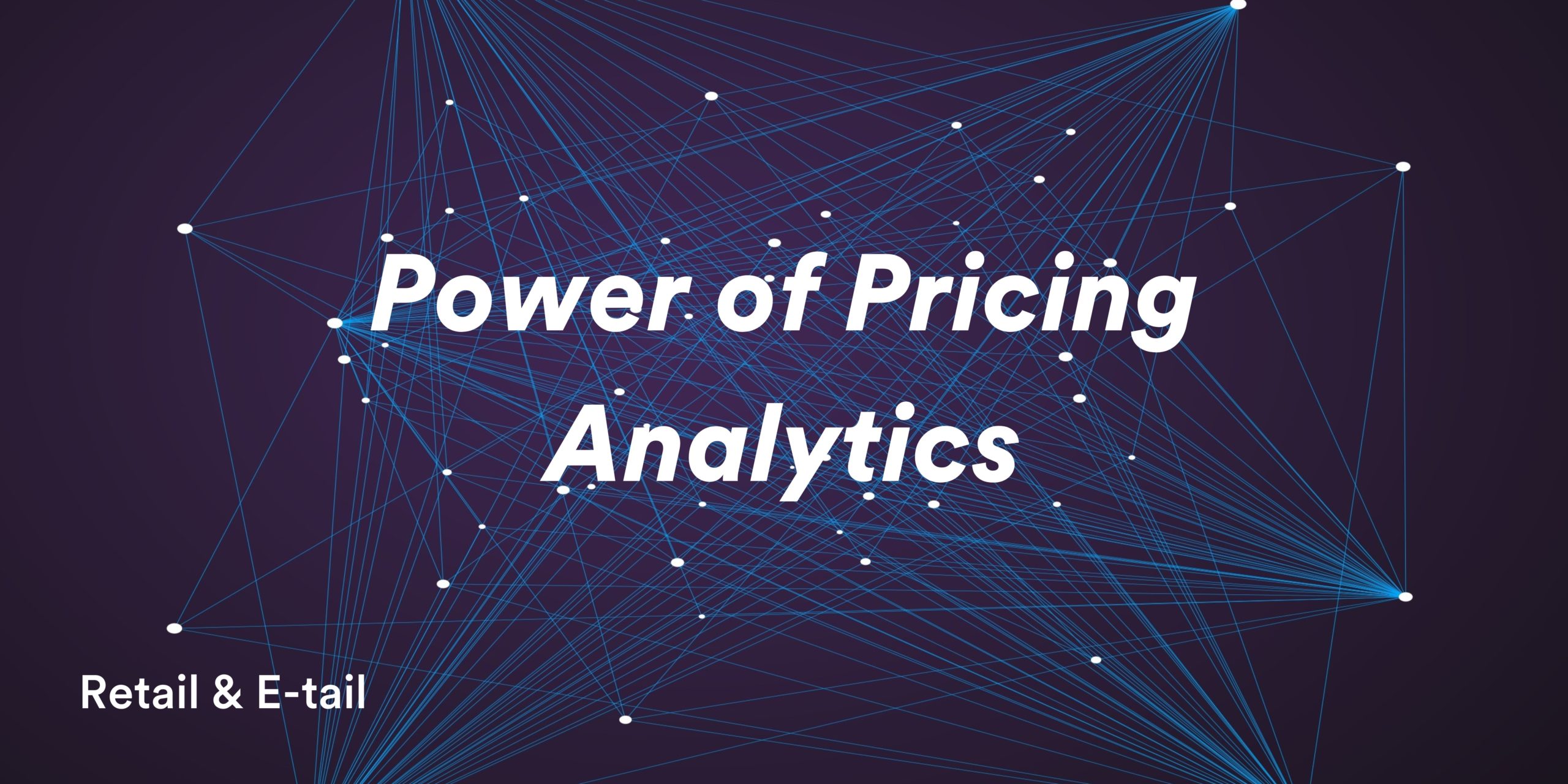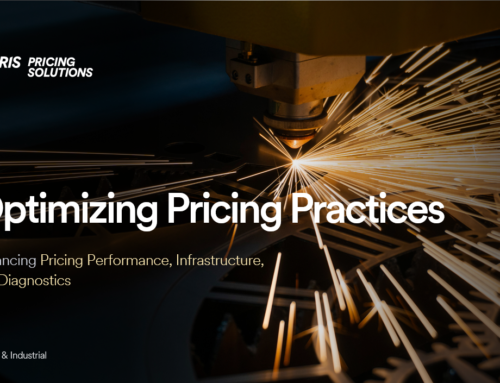 By: Ben Garden, Director of Analytics, Iris Pricing Solutions
By: Ben Garden, Director of Analytics, Iris Pricing Solutions
There are significant benefits to working with a team who has high-level pricing analytical skills and can use your company’s data to inform pricing and create new pricing opportunities, especially in the areas of e-commerce and competitive intelligence.
Leveraging your data and analytics to make product-level pricing recommendations can capture additional market revenue. At Iris Pricing Solutions, our clients see an average of 1% to 3% bottom-line growth (with no associated costs). While product-level pricing recommendations are the area where our clients see the highest return on their investment (ROI), category guidance often plays a role in strategy as well. Our goal is to identify a 10:1 ROI on investment by identifying and quantifying pricing opportunities across the product portfolio. The Iris Pricing Solutions team uses analytics and data-driven methodology to ensure that a price adjustment will have a positive business impact.
Leverage Data to Create New Pricing Opportunities
How can pricing inspire bottom-line growth when a business has product pricing restrictions (a minimum advertising price (MAP) or MSRP price, for example)? For those businesses that can’t touch key products in terms of price, there are ways to leverage data to uncover new pricing opportunities. We consider:
- Portfolio segmentation to quickly quantify how much revenue is eligible for the price adjustment and codify segments by price sensitivity and competitor coverage.
- Promotional effectiveness to guide promotion and discounting practices. This leads to actionable decisions around what products achieve our marketing goals, through the significant lift, customer conquesting, retention, loyalty, and last but not least, revenue.
- Competitive intelligence to track market price moves. This enables our clients to instantly see when competitors promote products and make price adjustments.
- Shipping analytics
- Recommendation engines and systems to pair items statistically proven to increase avg. customer spend.
- Analytics tools and modeling (like Tableau and similar software)
- Store tiering to establish a customer-centric and strategic price differentiation framework for locations leveraging customer attributes, competition, and underlying demographics about the local area.
- Subscriptions, membership, and loyalty programs provide data about consumers’ buying trends and habits.
Based on the considerations above, there are five pricing analytics capabilities that the team at Iris Pricing Solutions uses to achieve significant bottom-line growth for our clients.
5 Critical Pricing Analytics Capabilities
-
Competitive Intelligence
With competitive intelligence, we give our clients the tools to see a cross-competitive landscape much more clearly and help them accurately determine how they are pricing in terms of their competitors at an item and product level, and in certain categories. This intelligence is the lever that helps some vendors dominate retail and etail markets because they know how they can accurately match their products and prices to a competitor’s.
Known as web scraping, this process involves extracting product-level pricing from core competitors and gives more frequent insight into how and when competitors set and change prices. Regularly web scraping an entire product portfolio provides competitive pricing information that is pertinent in order for our clients to price competitively in the marketplace.
The data that’s scraped is used within our dynamic pricing models to understand the price sensitivity of brands and their products so we can accurately predict how customers will react to a price change. We then take that information into consideration before recommending a price adjustment.
-
Better Data Delivery
The thing about web scraping is that it yields a lot of data – so much so, that it can be overwhelming to unpack and analyze coherently. That’s where data delivery comes into play. We build our clients a user-friendly dashboard powered with the insights they need, so they can get the information they seek at the touch of a button. The dashboard is customized for clients so they can see the information that will be relevant to them. For example, knowing how the top ten products are priced and how their own products compare.
Automating these insights is not only helpful but necessary. Etail brands with more than 50,000 products simply can’t scan through all that data manually. Our customized dashboard will automate pricing insights, identifying where to pay more attention in the product portfolio all while feeding competitive pricing data through the dashboard into a dynamic pricing model that uses price elasticity, business rules, and web scraping to optimize prices and recommend where and when to change pricing.
Customized analytics modeling dashboards allow businesses to communicate internally about price recommendations for specific products. Knowing what the model is recommending and why is important to many stakeholders. With customized modeling, we connect a variety of internal and external systems, pull and analyze the required data and push that back to the business teams in a comprehensive way. This is all done automatically. “Ultimately, our systems become an extension of our clients and provide them with the ability to always have their fingers on the pulse of how pricing and systems are changing so we can continue to be an advisor to them,” Ben Garden, Director of Analytics, Iris Pricing Solutions, explains.
-
Price Sensitivity Levers
Price elasticity and price sensitivity will come into play when pricing. Perceived brand quality, free shipping, return policies, loyalty programs, and more all come into play in terms of price sensitivity and elasticity.
Strategic prices across platforms
Some etailers have different price books depending on how a customer lands on their website. Customizing prices depending on where and how a customer is shopping is advantageous but requires an accurate determination of price sensitivity. Rather than making a blanket price increase across a product portfolio, pricing is done very surgically and only on products determined to have low price sensitivity. This strategy depends, of course, on the industry and is used more commonly in e-commerce than in food service or in the B2B space.
Tiering and Segmentation
We use clustering algorithms to advise on store tiering and to profile and segment customers based on age, income, location, average spend, purchase frequency, etc. This data is useful for determining pricing and for accurately predicting the success of certain promotional campaigns.
Shipping
Amazon has set the tone for the Internet in terms of fast, quick, and free shipping. It’s important to look at shipping strategically. Analyzing transactional data will lead to a strategic policy regarding minimum shipping thresholds on websites or services.
These policies should be data-driven and designed to increase the average spend on a website. Setting minimum shipping thresholds to strategically increase the amount of product or value added to a basket can lead to huge revenue gains. When done correctly, this is not noticeable to the customer. This process requires analyzing a heavy amount of data including shipping data and customer-related data like transactional information and order behaviour. This information is then leveraged to adjust pricing recommendations around minimum shipping thresholds.
Promotions and Stock
It’s important to remain customer-centric and look at products to see how people react to related promotions. Our teams leverage data to determine price elasticities and whether a product will react well to a promotion or promotional event. In terms of large events like Boxing Day and Black Friday, the data we collect can be used to advise just how much stock a store should have on hand. Stocking on certain products needs to be done strategically and planned well in advance.
-
Data-Driven Recommendation Engines
In the realm of eCommerce, part of our core pricing capabilities includes understanding what other items people add to their basket before checking out. With this information, we can build association rules between products. Looking at thousands of transactions we can see what products are purchased in combination and use this information to build data-driven recommendation engines. With recommendation windows that are driven by data, companies are better able to upsell, cross-sell and most importantly, give their customers a better online experience.
-
Organized Data
Most clients really don’t have the expertise to determine if the data they’re receiving is clean, nor do they know how to clean the data so that it can produce accurate and reliable insights. Too often we see clients who have invested in extract, transfer, and load tools that collect data, but that information becomes a jumbled mess that can’t be used. Our team meticulously cleans up that data and files it so that statistical modeling can be conducted, and insights gleaned.
A Customized, Experienced Approach
Every project is different. Experienced teams that internally share their learnings and knowledge across a wide variety of industries are better equipped to provide superior results. We believe that with experience comes pattern recognition, which helps us solve problems and create innovative solutions very quickly.
At Iris Pricing Solutions, our price optimization approach is better than what’s in the market because it is designed to tie all forms of data together really well to provide more robust, realistic, and accurate insights. It’s also custom-tailored to each client, and that customized approach is critical to increasing revenue that translates to positive bottom-line growth.





